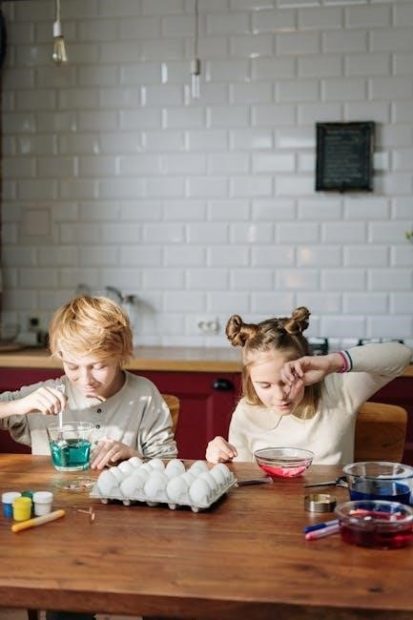Car paint mixing involves combining specific ratios of basecoat, clear coat, and solvents to achieve precise color matches and durable finishes. Essential for automotive restoration, this process requires careful measurement and adherence to manufacturer guidelines. Detailed PDF guides and manufacturer instructions provide essential insights, ensuring professional results.
What is Car Paint Mixing?
Car paint mixing is the process of combining specific automotive paint components to achieve precise color matches and durable finishes. It involves blending base coats, clear coats, and solvents in exact ratios to meet manufacturer specifications. This process is crucial for automotive repair, refinishing, and custom paintwork, ensuring consistent results and long-lasting protection for vehicle surfaces.
Professionals use detailed formulas, often provided in PDF guides, to ensure accuracy. Proper mixing prevents issues like peeling, fading, or color mismatch. By following these formulas, technicians achieve high-quality finishes that withstand environmental stresses and maintain the vehicle’s appearance over time.
The Importance of Car Paint Mixing
Car paint mixing is essential for achieving precise color matches and ensuring durable, high-quality finishes. Proper mixing prevents issues like peeling, fading, or uneven textures, which can compromise a vehicle’s appearance and protection. Accurate ratios, as specified in PDF guides, are critical for maintaining the paint’s structural integrity and aesthetic appeal.
Using manufacturer-approved formulas ensures compatibility and longevity of the paint. Incorrect mixing can lead to costly repairs or rework. By following established guidelines, technicians can deliver professional results, preserving the vehicle’s value and ensuring customer satisfaction. Proper paint mixing is a cornerstone of automotive refinishing, making it indispensable for both repair and custom projects.
A Brief History of Car Paint Development
Car paint has evolved significantly since its inception in the early 20th century. Initially, vehicles were painted with simple enamel-based paints, which provided durability but limited color options. The 1950s saw the introduction of acrylic enamels, offering greater variety and gloss retention. The 1980s marked a shift to clear coat systems, enhancing durability and UV resistance. Modern paints incorporate advanced polymers and waterborne technologies, reducing environmental impact. The development of car paint has been driven by the need for better aesthetics, durability, and sustainability. This evolution has led to sophisticated mixing formulas, enabling precise color matching and high-performance finishes. Historical advancements in car paint development have laid the foundation for today’s precise and efficient mixing processes.
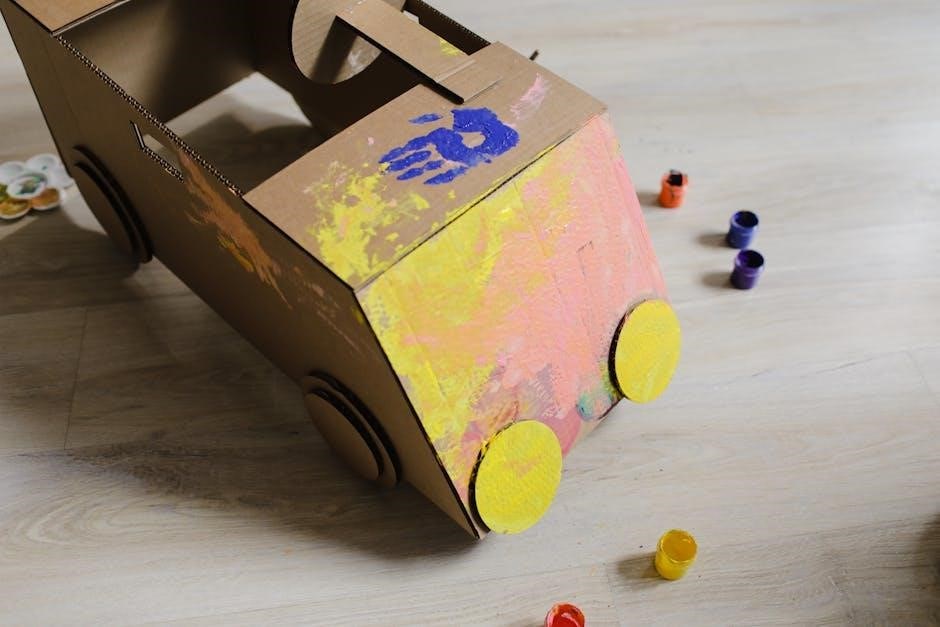
Essential Concepts in Car Paint Chemistry
Car paint chemistry involves understanding binders, pigments, solvents, and additives. Binders provide adhesion and durability, while pigments deliver color. Solvents control viscosity, and additives enhance properties like UV resistance.
Understanding Paint Components
Car paint consists of four primary components: binders, pigments, solvents, and additives. Binders form the paint film, providing adhesion and durability. Pigments deliver color and UV resistance. Solvents control viscosity, enabling proper application. Additives enhance specific properties, such as flow and drying speed. Together, these elements create a durable, visually appealing finish. Understanding their roles and interactions is crucial for successful paint mixing and application.
The Role of Solvents and Thinners
Solvents and thinners play a critical role in car paint mixing by controlling viscosity and ensuring proper paint flow. Solvents evaporate during application, leaving a smooth, even film. Thinners adjust paint consistency without altering color, enabling precise application. Proper solvent-to-paint ratios are essential for achieving the desired finish. Incorrect ratios can lead to uneven drying or peeling. Always use high-quality solvents and thinners recommended by manufacturers to ensure optimal results and durability. Adhering to guidelines helps prevent common issues like orange peel or sagging. Proper ventilation is necessary when working with solvents due to their volatile nature; Understanding their roles is key to mastering car paint mixing techniques for professional outcomes.
Types of Car Paint Systems
Car paint systems vary based on formulation and application requirements. The most common types include acrylic enamel, urethane, and waterborne systems. Acrylic enamel is known for its durability and glossy finish, often used in classic car restorations. Urethane-based paints are popular in modern automotive repair due to their resistance to UV rays and flexibility. Waterborne systems are eco-friendly, with lower volatile organic compounds (VOCs), making them ideal for high-volume manufacturing. Each system has specific mixing ratios and curing processes, requiring adherence to manufacturer guidelines for optimal results. Understanding these systems is crucial for achieving professional-grade finishes and ensuring long-lasting protection for vehicle surfaces.
Tools and Equipment Needed for Paint Mixing
Essential tools include measuring cups, stir sticks, digital scales, and mixing stations. Proper ventilation tools like air compressors and spray booths ensure safe and precise application.
Basic Tools for Paint Preparation
Paint preparation requires a range of essential tools to ensure a smooth application. Measuring cups and graduated cylinders are crucial for accurately mixing paint and thinners. Stir sticks or mixing paddles help blend ingredients thoroughly. Paint strainers prevent debris from entering the mixing container. Safety goggles and gloves protect from chemical splashes. A well-ventilated workspace is vital to prevent inhaling fumes. Digital scales offer precision for measuring components, while cleaning cloths keep surfaces spotless. These tools collectively ensure a professional-grade paint mixing process, adhering to safety and quality standards as outlined in PDF guides and manufacturer instructions.
Advanced Equipment for Professional Results
Professional car paint mixing requires advanced equipment for precision and efficiency. Automatic paint mixing systems ensure accurate ratio calculations and consistent color reproduction. Viscometers measure paint viscosity, guaranteeing optimal application properties. Spray booths with controlled ventilation and temperature settings minimize dust and fumes. Nitrogen generators provide clean, dry air for spraying, reducing moisture-related issues. UV curing lights accelerate drying times for modern waterborne paints. These tools, often outlined in detailed PDF guides, are essential for achieving high-quality, long-lasting finishes in automotive refinishing. Investing in such equipment ensures professional-grade results and adherence to industry standards. Proper training and maintenance are crucial for maximizing their effectiveness and safety.
The Importance of Proper Ventilation
Proper ventilation is critical when mixing and applying car paint to ensure both safety and quality results. Solvent-based paints release volatile organic compounds (VOCs) and harmful fumes, which can pose serious health risks without adequate airflow. A well-ventilated workspace prevents the accumulation of toxic vapors, reducing the risk of respiratory issues and dizziness. Additionally, ventilation helps maintain a controlled environment, minimizing dust and moisture interference during painting. Explosion hazards from flammable solvents are also mitigated with proper airflow. Always use respirators and ensure cross-ventilation in the workspace. PDF guides often emphasize these safety measures to ensure a safe and effective painting process.
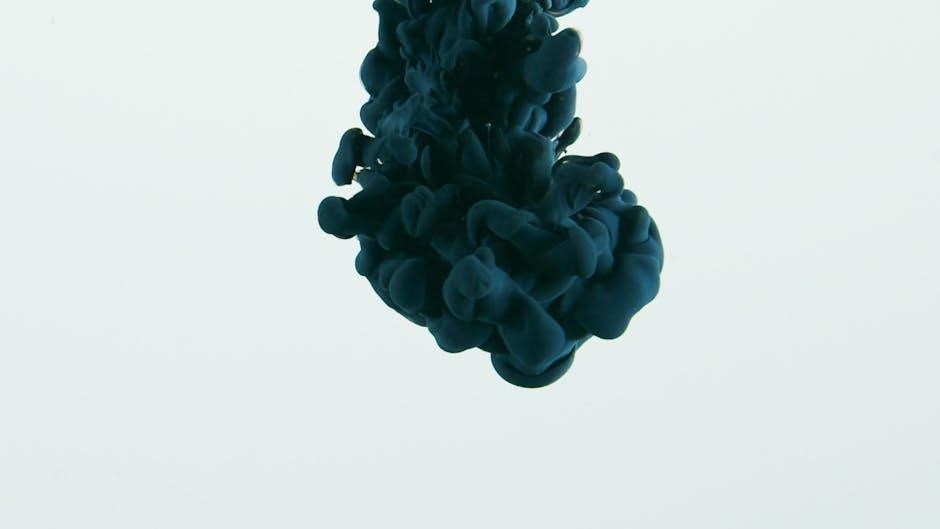
Safety Precautions When Mixing Car Paint
Always wear protective gear, including gloves, goggles, and a mask to prevent exposure to harmful chemicals. Well-ventilated areas are essential to avoid inhaling toxic fumes. Follow all safety guidelines for handling hazardous materials to minimize risks and ensure a safe working environment. Proper equipment and precautions protect health and prevent accidents, ensuring a secure and effective paint-mixing process. These measures are crucial for both professionals and DIY enthusiasts working with automotive paints and solvents, as emphasized in PDF guides and manufacturer instructions. Prioritize safety to achieve professional results without compromising well-being. Always refer to reliable resources for detailed safety protocols and best practices.
Protective Gear and Clothing
When mixing car paint, wearing proper protective gear is crucial to avoid exposure to hazardous chemicals. Essential items include gloves to prevent skin contact with toxic substances, safety goggles to protect eyes from splashes, and a face mask or respirator to avoid inhaling harmful fumes. Long sleeves and coveralls can shield skin from accidental spills, while closed-toe shoes provide additional protection. A well-ventilated workspace is also vital to prevent the accumulation of dangerous vapors. Using high-quality, chemical-resistant equipment ensures safety and minimizes health risks. Always follow safety guidelines provided in car paint mixing formulas PDF guides to maintain a secure working environment. Proper protective gear is non-negotiable for safe and effective paint mixing.
Hazardous Materials Handling
Handling hazardous materials in car paint mixing requires strict adherence to safety protocols to minimize risks. Paints, thinners, and solvents are highly flammable and toxic, necessitating proper storage in well-ventilated areas away from heat sources. Always use approved containers and ensure they are tightly sealed when not in use. Dispose of leftover materials and rags according to local regulations, avoiding drains to prevent environmental contamination. In case of spills, have a cleanup kit ready and follow emergency procedures. Be aware of health risks, such as skin irritation or respiratory issues, and know first aid measures. Refer to manufacturer guidelines and safety data sheets for specific handling instructions. Proper precautions ensure a safer working environment and compliance with safety standards. Always prioritize safety when working with hazardous materials to avoid accidents and long-term health consequences. Adhering to these practices minimizes risks associated with car paint mixing formulas.
Emergency Procedures
In case of an accident during car paint mixing, follow emergency procedures to ensure safety. If paint or chemicals come into contact with skin or eyes, immediately flush with water for at least 15 minutes and seek medical attention. For inhalation of fumes, move the person to fresh air and provide oxygen if necessary. In case of a fire, use a fire extinguisher rated for chemical fires and evacuate the area. Keep emergency contact numbers nearby, such as the poison control hotline. Ensure a first aid kit and spill cleanup materials are easily accessible. Regularly review safety protocols to prepare for potential incidents. Proper emergency preparedness can prevent minor accidents from escalating into serious situations. Always prioritize quick and effective responses to maintain a safe environment.
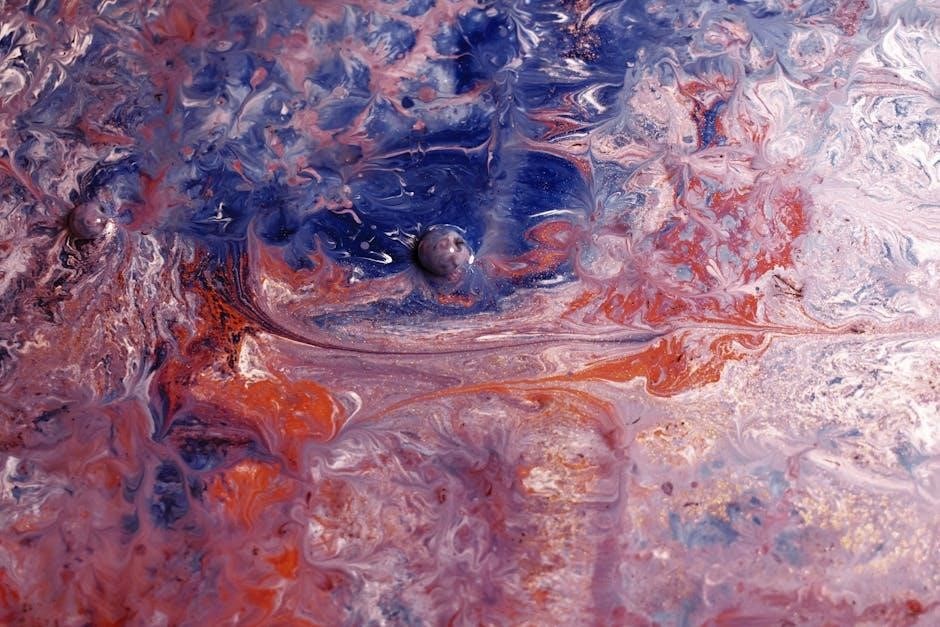
Understanding Color Matching in Car Paint
Color matching involves using formulas and codes to replicate specific shades, ensuring seamless repairs. Advanced tools like spectrophotometers measure paint samples for accuracy. Proper lighting conditions are crucial for precise matches, as colors can appear differently under varying light sources. This process is vital for maintaining a vehicle’s original appearance during touch-ups or custom finishes. Professional techniques and digital systems enhance precision, making color matching a cornerstone of modern automotive paintwork. Accurate color matching prevents noticeable mismatches and ensures a factory-like finish.
The Color Matching Process
The color matching process begins with identifying the vehicle’s original paint code, typically found on a manufacturer’s label. This code is then used to select the appropriate basecoat and additives. A spectrophotometer may be employed to measure the paint’s reflectivity and determine the exact formulation. Next, a small sample is mixed and applied to a test panel. The color is evaluated under different lighting conditions to ensure accuracy. Adjustments are made by adding tints or toners to achieve a precise match. Once satisfied, the final mixture is used for the repair. This meticulous process ensures a seamless blend with the surrounding paint, maintaining the vehicle’s aesthetic integrity.
The Role of Light in Color Perception
Light plays a crucial role in color perception, as it determines how colors appear to the human eye. Natural daylight is often considered the standard for accurate color matching, but artificial light sources like LED or halogen can alter color appearance. This phenomenon, known as color shift, occurs because different light sources emit varying wavelengths and intensities. For instance, warm white light may make colors appear more yellow, while cool white light can create a bluish tint. Understanding these effects is essential for car paint mixing, as even slight variations in lighting can lead to mismatched colors. Professionals use controlled lighting conditions to ensure accurate color perception and consistent results.
Basic Color Theory for Paint Mixing
Basic color theory forms the foundation of effective paint mixing, focusing on how colors interact and combine. The color wheel is a fundamental tool, illustrating primary colors (red, yellow, blue) and their mixtures into secondary colors (orange, green, violet). Understanding hue, saturation, and value is crucial for creating desired shades and tones. Primary colors cannot be created by mixing others, while secondary colors are formed by combining two primaries. Tertiary colors are achieved by mixing primary and secondary colors, offering a wider palette. By adjusting ratios and adding black, white, or gray, painters can achieve precise color matches and custom finishes. This knowledge is vital for car paint mixing to ensure accurate and visually appealing results.
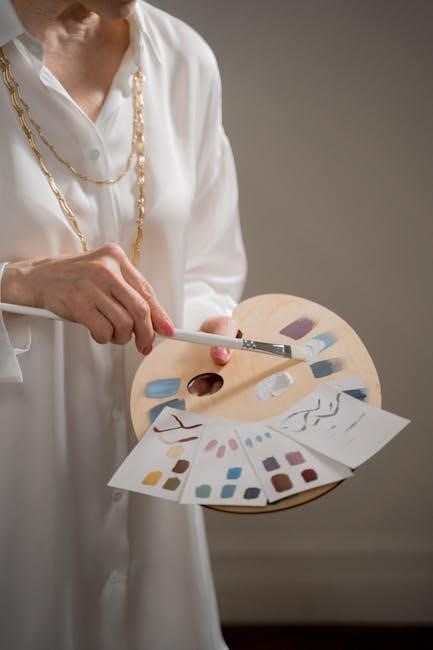
Paint Mixing Techniques and Best Practices
Mastering paint mixing techniques ensures precise color matching and durability. Always follow manufacturer guidelines, measure accurately, and mix in controlled environments. Practice and patience yield professional finishes.
Manual Mixing Techniques
Manual mixing is a traditional method requiring precision and skill. Start by measuring base coat and thinner using digital scales and graduated cylinders for accuracy. Mix thoroughly, ensuring no streaks remain. Always refer to the car paint mixing formulas PDF for specific ratios. Stir in a well-ventilated area, avoiding dust. Use a clean, flat stirrer to blend from the bottom up. Check viscosity and flow, adjusting with reducer if needed. Allow mixtures to sit briefly before application. Consistent manual techniques yield professional results in automotive painting projects, ensuring durability and a flawless finish.
Digital Mixing Systems
Digital mixing systems revolutionize car paint preparation by offering precision and efficiency. These systems use advanced software to calculate exact paint-to-thinner ratios, ensuring accurate color matching. Many modern tools include touchscreens and integrated scales, streamlining the mixing process. By inputting color codes and vehicle data, the system provides step-by-step instructions. This eliminates human error and saves time. Digital systems often connect to extensive paint databases, covering various manufacturers and models. They also track inventory, reducing waste and optimizing material usage. Regular software updates ensure compatibility with new paint formulations. For professional results, digital mixing systems are essential, combining technology with traditional techniques to achieve flawless finishes in automotive painting projects. Their adoption is growing rapidly in the industry.
Ratio Calculations for Accuracy
Accurate ratio calculations are crucial for successful car paint mixing. Paint formulas typically involve specific proportions of basecoat, hardener, and thinner. These ratios ensure proper paint adhesion, durability, and finish. Manufacturers provide detailed instructions for each product, which must be followed precisely. Using digital scales or measuring cups can help achieve the correct mix. Incorrect ratios can lead to poor paint performance or failure. Always refer to the manufacturer’s guidelines and use calibrated tools to ensure precision. Proper mixing also depends on environmental factors like temperature and humidity. Adhering to these calculations is essential for achieving professional-grade results in automotive painting projects. Attention to detail ensures the paint applies smoothly and lasts longer.
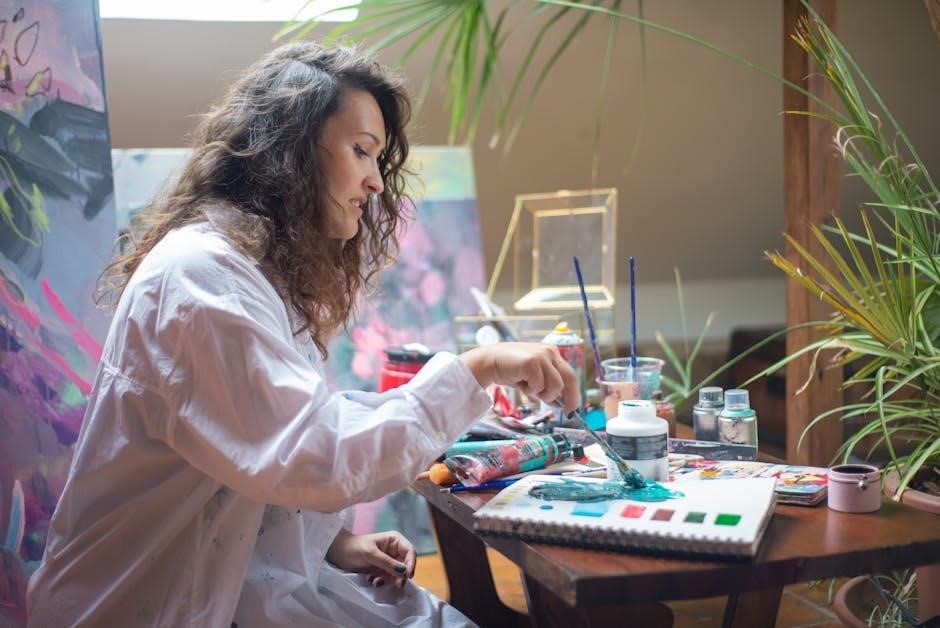
Common Issues in Car Paint Mixing
Common issues include incorrect mixing ratios, humidity affecting paint flow, and contamination from dust or debris. These can lead to uneven finishes or adhesion failure. Proper ventilation and clean conditions are essential to avoid such problems. Always follow manufacturer guidelines and use compatible products to ensure optimal results. Regularly inspect equipment and materials to prevent contamination. Addressing these issues early ensures a professional-quality finish and long-lasting durability for the vehicle’s paintwork.
Identifying Common Mixing Errors
Common mixing errors include incorrect ratio measurements, improper solvent additions, and insufficient stirring. These mistakes can lead to uneven finishes, poor adhesion, or color mismatch. Contamination from dust or debris is another frequent issue, affecting paint quality. Environmental factors like humidity and temperature can also disrupt the mixing process. Inexperienced mixers often overlook manufacturer guidelines, leading to formulation errors. To identify these issues, inspect the mix for consistency and test on a small surface before application. Addressing errors early prevents costly rework and ensures a professional finish. Regular training and adherence to best practices minimize these common pitfalls in car paint mixing.
Troubleshooting Paint Application Problems
Common paint application issues include uneven finishes, peeling, or poor adhesion. These problems often stem from incorrect mixing ratios, insufficient surface preparation, or environmental factors like humidity. Contamination during mixing or application can also cause defects. To troubleshoot, inspect the painted surface for flaws and test the paint on a small area first. Adjust the mix ratios according to manufacturer guidelines and ensure proper drying times. Environmental control, such as using a spray booth, can minimize issues. Regularly cleaning tools and surfaces prevents contamination. Following best practices and safety protocols helps avoid recurring problems. Proper troubleshooting ensures a smooth, professional finish every time.
Preventing Inconsistent Color Matching
Inconsistent color matching can occur due to incorrect mixing ratios, environmental factors, or improper calibration of equipment. To prevent this, ensure precise measurement of paint components using high-quality tools and follow manufacturer guidelines. Regularly calibrate mixing equipment and maintain consistent lighting conditions when comparing colors. Use digital color matching tools to minimize human error and verify the final color with a test panel. Maintain a clean, controlled environment during mixing to avoid contamination. Consistency in technique and adherence to formulas are key to achieving accurate results. Regularly update your reference materials and consult reliable PDF guides for the latest methods and best practices in color matching.
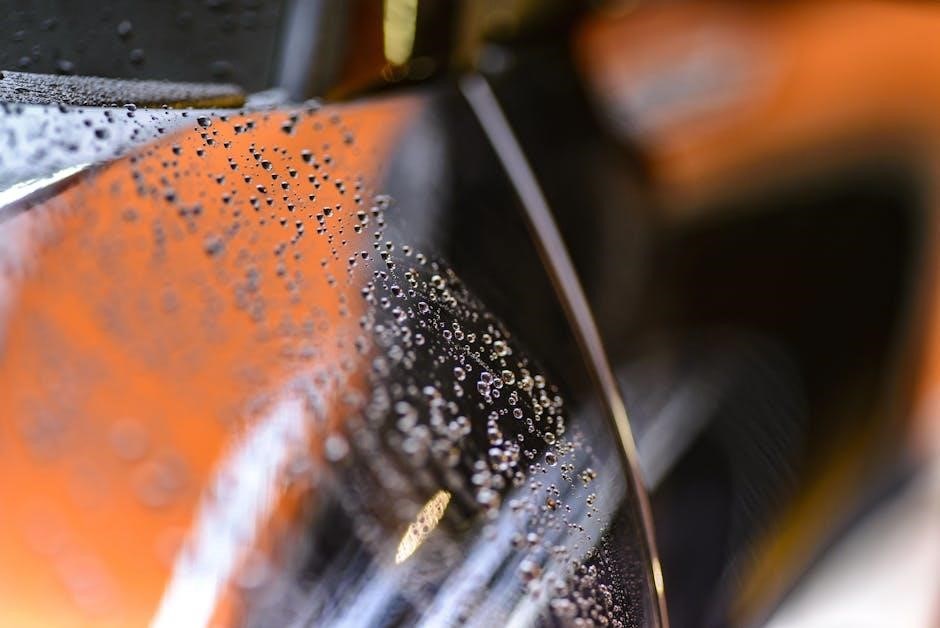
Resources for Car Paint Mixing Formulas
Workshops, online tutorials, and manufacturer websites offer detailed guides. Forums and communities share expert tips, while specialized suppliers provide updated formulas and materials for precise color matching.
Where to Find Reliable PDF Guides
Reliable PDF guides for car paint mixing formulas can be sourced from official manufacturer websites, automotive repair forums, and trusted online repositories. Many professional auto body shops and paint suppliers offer detailed downloadable manuals that include precise mixing ratios, safety protocols, and application techniques. Additionally, educational platforms and industry-specific databases provide comprehensive resources for both novice and experienced technicians. These guides often include step-by-step instructions, color charts, and troubleshooting tips to ensure accurate and efficient paint mixing. Always verify the credibility of the source to ensure the information adheres to industry standards and safety regulations.
Manufacturer-Specific Guidelines
Manufacturer-specific guidelines for car paint mixing are crucial for achieving precise color matches and ensuring durability. These guidelines, often provided in detailed PDF manuals, outline the exact ratios and procedures for mixing paints tailored to specific vehicle makes and models. Leading manufacturers like PPG, Dupont, and Axalta publish comprehensive resources that include technical specifications, safety protocols, and application tips. These documents are typically accessible through official websites or authorized distributors. Adhering to these guidelines ensures compliance with industry standards, optimal paint performance, and vehicle safety. Always consult the latest version of the manufacturer’s PDF guide to stay updated with current formulations and best practices.
Online Communities and Forums
Online communities and forums are invaluable resources for car paint mixing, offering real-time advice and shared experiences. Platforms like Reddit, Facebook groups, and specialized automotive forums host discussions where professionals and enthusiasts exchange tips, troubleshoot common issues, and share PDF guides. These communities often include detailed threads on color matching, product recommendations, and step-by-step mixing techniques. Many users upload their own formulas and procedures, providing practical insights for specific projects. Additionally, these forums allow for direct interaction with experts, enabling quick solutions to complex problems. For those seeking hands-on guidance, online communities are a dynamic and accessible way to learn and refine car paint mixing skills.
Mastering car paint mixing requires patience, practice, and adherence to proven formulas. Continuous learning and experimentation are key to achieving professional results and ensuring long-lasting finishes.
Mastering the Art of Paint Mixing
Mastering car paint mixing involves a deep understanding of formulas, techniques, and materials. By following detailed guides and manufacturer instructions, professionals achieve precise color matches and durable finishes. Patience and practice are essential, as even minor errors can affect results. Experimentation with different ratios and solvents can enhance skills, ensuring long-lasting, high-quality finishes. Continuous learning and adherence to safety protocols are crucial for success in automotive restoration and repair.
Encouragement to Practice and Experiment
Practicing and experimenting with car paint mixing are key to mastering the craft. Start with small projects to build confidence and refine techniques. Experimenting with different ratios, solvents, and colors can yield unique results, enhancing your skills. Use reliable PDF guides and manufacturer instructions as references to ensure accuracy. Embrace trial and error as opportunities to learn and improve. Regular practice helps develop a keen eye for color matching and finish quality. Over time, you’ll gain the expertise to tackle complex paint jobs with precision and creativity. Remember, mastery comes with patience and consistent effort.
References and Further Reading
For deeper insights into car paint mixing, consult manufacturer guides like Dupont or 3M, which provide detailed formulas and techniques. Online forums and communities, such as automotive repair groups, share practical tips and troubleshooting advice. Additionally, academic resources and books on automotive refinishing offer theoretical foundations. Websites specializing in auto bodywork often publish step-by-step tutorials and case studies. PDF guides, such as those from SEM or PPG, are invaluable for understanding color matching and paint system compatibility. Lastly, workshops and training programs by industry professionals can enhance your practical skills and knowledge in car paint mixing.
